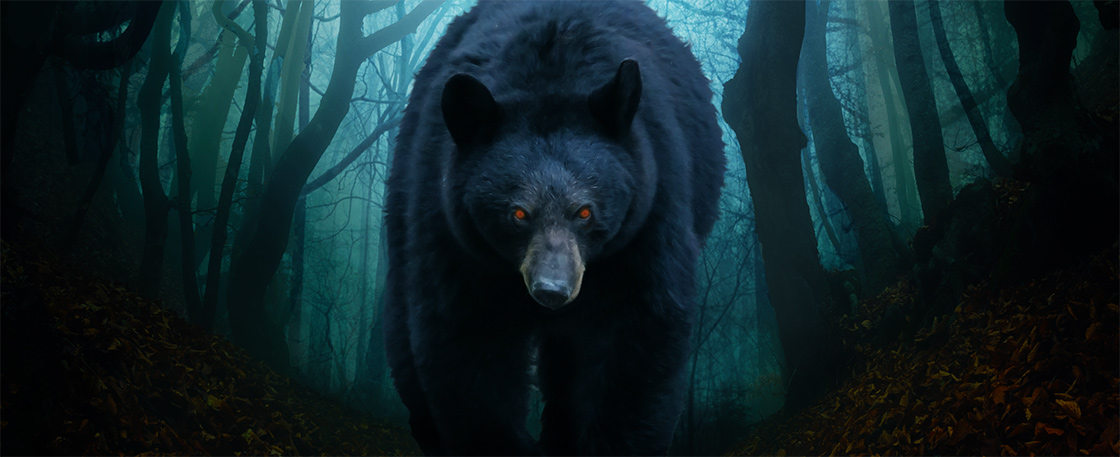Mike froze. He heard a heavy body rustling among the thorny bushes, wet smacking noises, and a whuffling exhalation of breath.
People had said that bears came into town to gorge on blackberries. Naturally, he’d imagined meeting one. But his imagination had always supplied daylight.
Back slowly away, they’d said. But the moment he moved to ease his weight off the boulder, the berry-eating noises stopped. He distinctly heard the animal sniff twice, followed by a deep-throated huff. Then it came toward him.
Now it was like the dream, a black mass growing larger, looming between Mike and the house. And, as in the dream, he couldn’t move.
The bear eased forward, slowly but without hesitation, until only the width of the boulder separated them. It rose up and leaned its forelegs against the stone; Mike heard the scrape of claws on granite. Then the bear stopped and stood still, as if posing for a picture of two friends leaning toward each other over a small table.
Mike’s neck hairs prickled his collar. He was so filled by fear, it felt as if thunderless sheet lightning played across the muscles of his back and down into his thighs.
Then the lightning died, and all he could sense was the unavoidable reality of the bear: the sight of its head silhouetted against the house lights; the oily-musty smell of its fur; the snuffle of its breathing; the wet warmth of its breath on his face.
It’s so real, he thought. But it feels like a dream.
He knew it was silly, but he also knew he had to speak to the bear. He whispered, “Do you want to . . . tell me something?”
The bear cocked its head and eased back a bit, as if deciding how to answer this unusual question.
But Mike already had the answer. 8 As if a tap had been opened, all of the fear suddenly drained out of him, and he was filled instead with a peculiar sensation of lightness—as if he might now float away, up through the forest canopy, off between the stars, to a place where he was somebody else, somebody who was so much more.
It could have been seconds or it could have been forever that he and the bear faced each other across the boulder. Then the back door opened and his mom called, “Mike! They found him! He’s OK!”
Then, like magic, the bear was gone. He heard it scuttling through the trees. Mike laughed, because the feeling of lightness did not disappear with the bear.
The feeling stayed with him, even after his father came home, enfolded Mike and Mom in a hug, then ate a big stack of buttermilk pancakes and slept for 16 hours straight.
9 And the bear never came back—not to the woods, not to Mike’s dreams.

